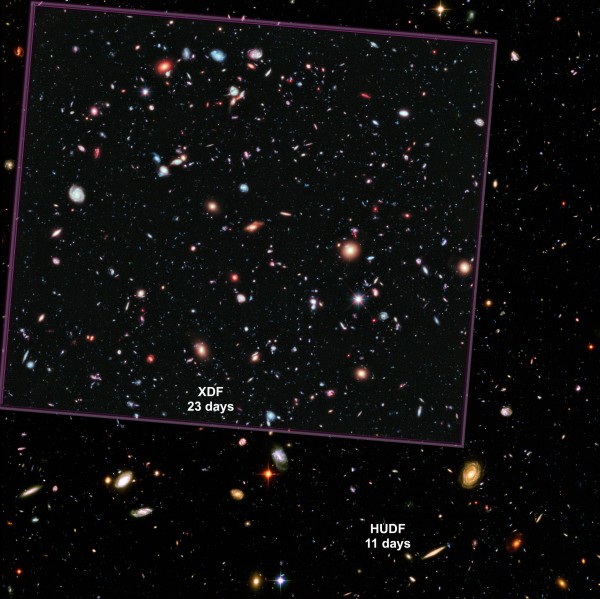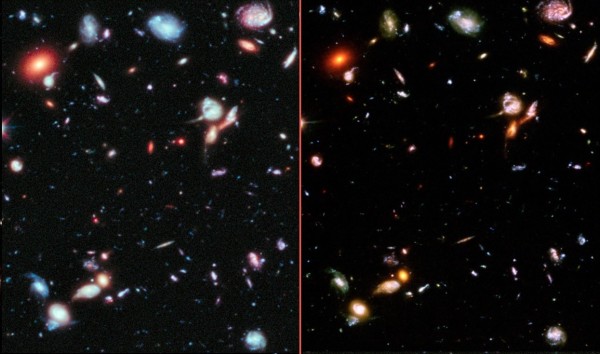“It is by going down into the abyss that we recover the treasures of life. Where you stumble, there lies your treasure.” –Joseph Campbell
Imagine you just stared into darkness, collecting every photon of light that came by. What would you wind up seeing? The Hubble Space Telescope has done this many times, creating the Hubble Deep Field first and then the Hubble Ultra Deep Field with upgraded cameras and more time. But most recently, the eXtreme Deep Field has surpassed even that.
 Image credit: NASA, ESA, G. Illingworth, D. Magee, and P. Oesch (University of California, Santa Cruz), R. Bouwens (Leiden University), and the HUDF09 Team (inset) / NASA, ESA, S. Beckwith (STScI) and the HUDF Team (main).
Image credit: NASA, ESA, G. Illingworth, D. Magee, and P. Oesch (University of California, Santa Cruz), R. Bouwens (Leiden University), and the HUDF09 Team (inset) / NASA, ESA, S. Beckwith (STScI) and the HUDF Team (main).
With double the exposure time in the same region as the Ultra Deep Field, we've set the most robust lower limit on the number of galaxies in the Universe, and learned what it will take to find the rest.


These are really cool images. Thanks Ethan for putting them up.
I can visualize these for obvious reasons.
However, I feel that this simple visualization will be lost with the infra red Jim Webb one
Does anyone know with the Jim Webb scope, how much natural images we will we loose and have to rely on artist renditions?
I have some experience using infra red cameras to find hot spots in electrical distribution panels.
Is the Webb Camera the same like this image here:
http://publiclab.org/wiki/near-infrared-camera
And if so, is this where artist come in and render them more how the human eye would see them?
@Ragtag #1
We do have infrared telescopes in service now, including space based ones. To get an idea of what the JWST images will look like, you can check out the images being currently released by the Spitzer Space Telescope team.
http://www.spitzer.caltech.edu/explore/475-Wallpapers
Based on the images shown, I prefer the Ultra Deep Field Image as it appears to be crisper with less noise than the Ultra image which doesn't appear to show any extra detail.
Regards ST
Can't edit my post but it should read ...
I prefer the Ultra Deep Field Image as it appears to be crisper with less noise than the Extreme image which doesn’t appear to show any extra detail.
Amazing and beautiful beyond the imagination to comprehend. Thanks Ethan!
"Know thou that every fixed star hath its own planets, and every planet its own creatures, whose number no man can compute." --Baha'u'llah
"...and shower upon me Thy confirmations, which alone can change...an atom into lights and suns" --excerpt from a Baha'i prayer
" O FLEETING SHADOW! Pass beyond the baser stages of doubt and rise to the exalted heights of certainty. Open the eye of truth, that thou mayest behold the veilless Beauty and exclaim: Hallowed be the Lord, the most excellent of all creators! --Baha'u'llah
@Denier #2.. Thanks for the Link.
Yes, people have been writing moving things about the beauty of the universe for a long time. It's too bad that for many of them their faith kept them from trying to ask any intelligent questions and try to find out anything about how it works.